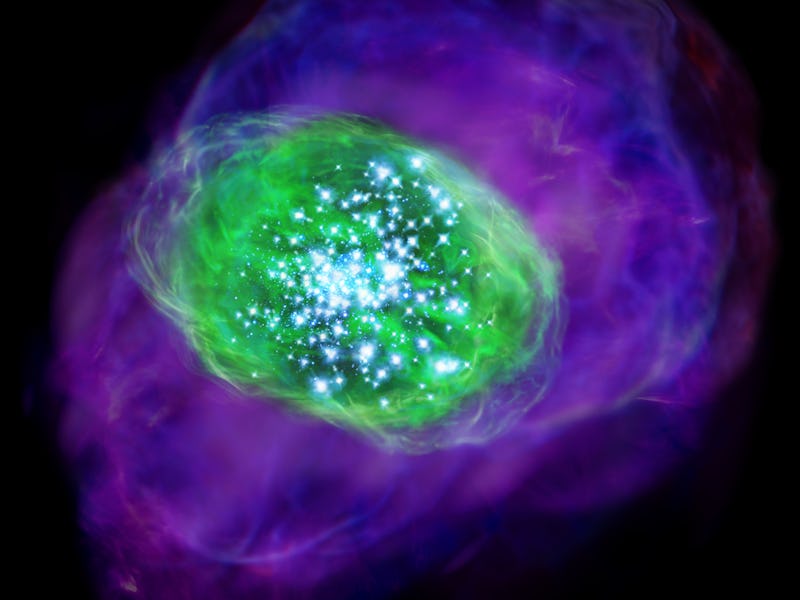Astronomers Discover Oxygen in the Farthest Reaches of the Universe
13.1 billion light-years away, a galaxy is breathing in the good stuff.

Scientists have just discovered oxygen in a galaxy about 13.1 billion light-years away — the farthest distance we’ve ever been able to detect this kind of gas elsewhere in the universe.
The new findings — brought forth by an international team of scientists using the Atacama Large Millimeter/submillimeter Array (ALMA) telescope in Chile, and published in the latest issue of Science — could be critical in providing some insight as to how the elemental composition of the early universe evolved, and perhaps illustrate what parts of the universe are more likely to possess ingredients most thought to be essential to helping form habitable worlds.
The consensus among scientists is that water is the most essential factor for life to begin and evolve in the universe. But it’s worth remembering there are two key ingredients that make up water: hydrogen and oxygen. The former is the most abundant element in the universe, making the latter a limiting factor. So if scientists can track where in the world oxygen resides in more abundant quantities, they would have a better chance of determining what star systems or galaxies have better chances of possessing water — and therefore are more likely to be habitable.
The new findings are actually a glimpse of the universe when it was just a mere infant. The cosmic age of the universe is estimated at 13.82 billion years. When scientists peer off into a galaxy that’s 13.1 billion light-years away, they’re really looking into the past and observing light that took that much time to arrive at Earth.
At that early age, the universe was a hot mess of ionized gas that was only just starting to cool down and aggregate up into the balls of energy we know as stars. Studying the early behavior of oxygen and other heavier elements helps astronomers learn more about how galaxies came together — and more importantly, about the formation of star systems with the potential to foster habitable planets and moons.
For this particular study, the galaxy in question, named SXDF-NB1006-2, “contains one tenth of oxygen found in our sun,” explained study coauthor Naoki Yoshida, an astronomer based at the Kavli Institute for the Physics and Mathematics of the Universe, in a news release. “But the small abundance is expected because the universe was still young and had a short history of star formation at that time.”
Watching how SXDF-NB1006-2 transforms would provide useful information into understanding how early galaxies evolved and matured into more stable celestial bodies. It’s still way too early to tell how those observations might fold into research into how habitable worlds form, but at least we’re off to a start.